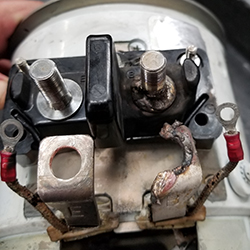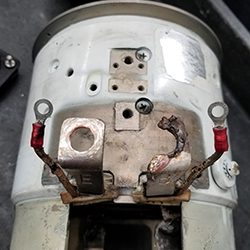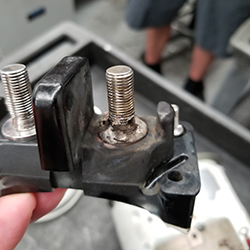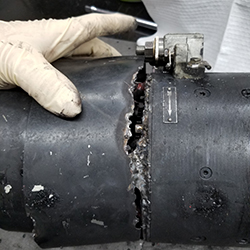All starters and generators need a way to connect wires to the aircraft. Most units accomplish this via a terminal block. The block is very basic and is made from a non-conductive material with threaded studs to join the aircraft wiring to the generator wiring. Though basic, proper torque and wire placement is critical. These units draw and generate enormous amounts of current, and a loose wire could lead to catastrophic failure.
A loose wire will cause arcing between the generator wiring, the stud, and the aircraft wiring. If the wires are too loose, this condition may go unnoticed for a period of time, but during that time, damage is still being done. The arcing acts like a welder fusing the parts together by melting, and this causes poor performance during starting and running the generator. If left in this condition the generator life will be shortened, and failure is imminent.
You can see in the photos below the damage that occurs when a single nut is not torqued correctly, leading to arcing and melting. This unit’s positive aircraft wire terminal completely disintegrated and fell to the side, resulting in not only terminal damage but also damage to the external generator housing and surrounding aircraft frame.




Troubleshooting Classic Learjet Spoileron Systems
The Critical Role of Lubrication for Aircraft Hydraulic Systems
Five Steps To Extend The Life Of Your Aircraft's Batteries
Preventing Downtime: Tracking Aircraft Wheel Inspections & OEM Limits
Important Inspection: Potential Corrosion Risk Near Falcon 900 Baggage Door Motor